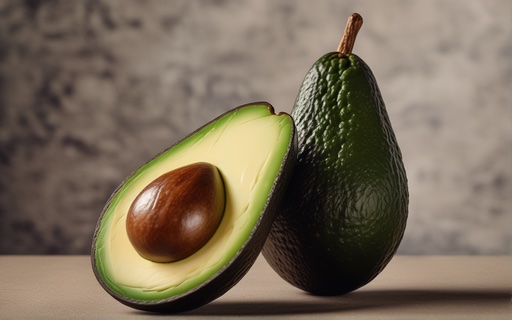Internet Asks: "Avocado in Spanish"
Avocado, or "aguacate" as it is known in Spanish, is more than just a fruit; it's a cultural icon in the Spanish-speaking world, particularly in Mexico and Central and South America. Revered for its rich, creamy texture and versatile culinary uses, the avocado is a staple ingredient in many traditional Spanish and Latin American dishes.
sponsored links

Origins and Name
The word 'aguacate' is derived from the Nahuatl word 'ahuacatl', which was used by the Aztecs in ancient Mexico. The fruit holds a deep cultural significance in Latin America, where it has been cultivated and consumed for thousands of years. In Spain, avocados were introduced later but have become increasingly popular, blending seamlessly into the Mediterranean diet.
Avocado in Spanish Cuisine
In Spanish and Latin American cuisine, the avocado is celebrated for its ability to complement a range of dishes:
-
- Guacamole: Perhaps the most famous avocado-based dish, guacamole is a traditional Mexican dip that has gained worldwide popularity. Made from mashed avocados, onions, tomatoes, lime juice, and various seasonings, guacamole is a staple in Mexican cuisine.
-
- Salads and Soups: Avocado is often sliced and added to salads and soups for its creamy texture and rich flavor.
-
- Sandwiches and Tacos: It's a common ingredient in sandwiches and tacos, adding a unique flavor and creamy consistency.
Nutritional Value of Avocado
Aguacates are not only delicious but also packed with nutrients:
- - Healthy Fats: They are rich in monounsaturated fats, which are heart-healthy.
- - Fiber: High in dietary fiber, avocados aid in digestion and can help control blood sugar levels.
- - Vitamins and Minerals: They are a good source of vitamins C, E, K, and B-6, as well as folate, magnesium, and potassium.
sponsored links
Growing and Harvesting Avocados
The ideal climate for growing avocados is warm and tropical. Countries like Mexico, the Dominican Republic, Colombia, and Peru are among the largest producers. The Hass avocado, known for its bumpy, dark skin, is the most popular variety, but there are many others, each with unique flavors and textures.
Cultural Significance
In many Spanish-speaking countries, avocados are more than just food; they're a part of cultural identity and culinary heritage. They are celebrated in festivals, depicted in art, and have been a part of traditional cuisine for centuries.
Conclusion
The 'aguacate' or avocado plays a significant role in Spanish and Latin American cuisine, renowned for its delightful taste, nutritional value, and cultural importance. From guacamole to salads and sandwiches, avocados are cherished across generations, infusing meals with their unique flavor and creamy texture.
Disclaimer: This article aims to provide general information about avocados in the context of Spanish and Latin American cultures and cuisines. For specific nutritional advice or information about avocado allergies, consult a healthcare professional or a dietary specialist.
sponsored links
References
1. USDA Food Data Central. "Avocados, raw, all commercial varieties." https://fdc.nal.usda.gov/fdc-app.html#/food-details/171705/nutrients.
2. California Avocado Commission. https://californiaavocado.com/
3. Academia Mexicana del Aguacate. "Variedades de Aguacate en México." https://academiamexicanadelaguacate.com/variedades/
4. FAO. "Avocado production in 2018, Crops/Regions/World list/Production Quantity (pick lists)." http://www.fao.org/faostat/en/#data/QC
5. Mexican Avocado Association. "The History of Avocados in Mexico." https://www.theamazingavocado.com/history-of-avocados/
People are also reading...
Calories in Small Avocado
Calories Small Avocado
1 Small Avocado Calories
Avocado Toast Dunkin
Avocado Bacon Burger
Matcha Drinks at Starbucks
Matcha Green Tea Latte Starbucks Calories
See the answer to: "Matcha Green Tea Latte Starbucks Calories"
Starbucks Matcha Ingredients
Matcha Starbucks Drinks
Calories In Steak?
Chicken Taco Calories?
Does Hot Chocolate Have Caffeine?
Are Mangoes Acidic?
Orange Juice pH?
Calories In a Grilled Cheese?
Ready to level-up?
Create meal plans 10x faster, follow up with your clients through our mobile app, and never struggle with meal planning or recipe management again.